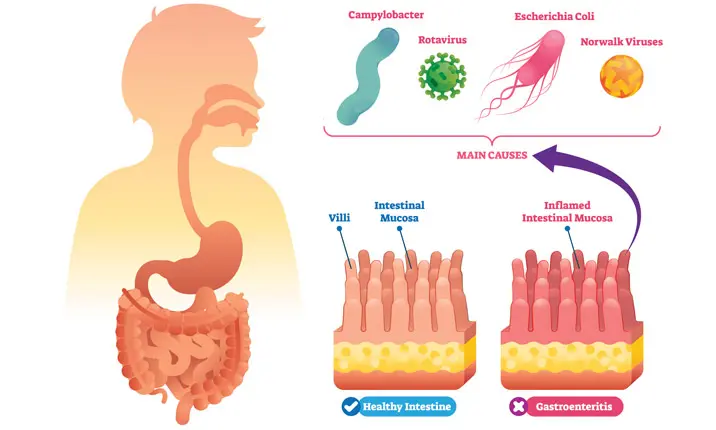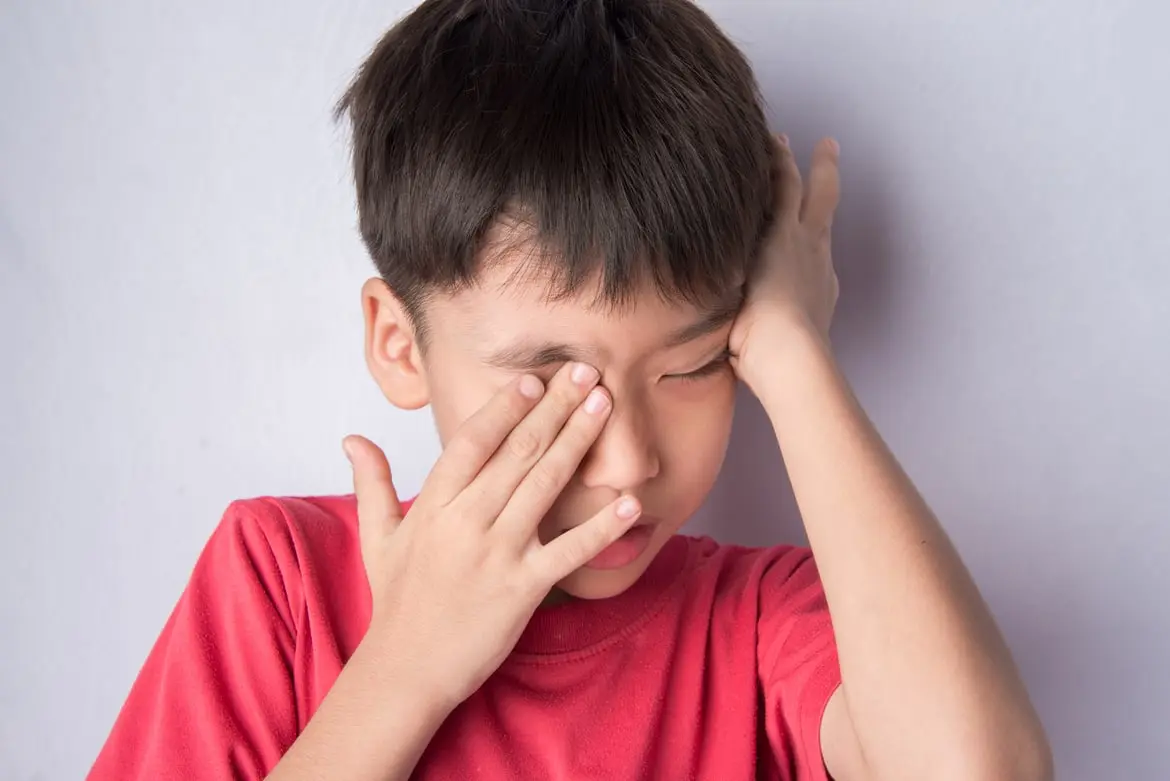Now that your kids are back to school, you're probably embracing morning routines and nightly homework. School is an incredibly important place for kids to gain knowledge and develop mental and interpersonal skills – but it is also a hotspot for bacteria and viruses.
So be sure to prepare for the inevitable: the back-to-school illnesses. Specialists at Mount Elizabeth Hospitals explain 5 common childhood illnesses and tips on how to help your child recover faster.
Common cold
You probably know the drill: Treat a mild fever, congestion, coughing, and a sore throat with lots of fluids and rest.
Symptoms of a common cold
Colds usually trigger an immune system response that causes:
- Sore throat
- Cough
- Headache
- Sneezing
Your child may also develop a stuffy or runny nose, and mild fever.
Should the fever persist for more than 5 days, or if there is nausea or diarrhoea, it is advisable to consult with a doctor. Dr Leong Hoe Nam, an infectious disease specialist at Mount Elizabeth Novena Hospital, explains that although it is rare for a common cold to develop into a more serious case, like pneumonia, it is better to see a doctor when symptoms manifest with more coughing, breathlessness and persistent fever.
While the common cold is usually a mild infection, they are more of a nuisance than it causing you to feel sick. "Adequate fluids and rest are extremely important to getting well fast," says Dr Leong.
How to prevent the common cold
Prevention tip: Make sure your child washes their hands properly and often, and remind them not to touch their eyes, nose, or mouth. You can also strengthen your child's immune system by making sure they get enough sleep, eat a healthy diet, and get of lots of exercise.
Influenza (Flu)
Influenza, commonly known as the flu, comes on hard and fast. Compared to a common cold, a flu consists more fever, headache and muscle aches, and less cough, sore throat and runny nose.
Symptoms of an influenza
- A fever of up to 40°C
- Body aches and chills
- Headache
- Sore throat
- Cough
- Vomiting and diarrhoea
A flu tends to be more severe and patients are more likely to be confined to the bed during the illness. When the flu strikes the young and elderly, especially, there is a higher chance of developing pneumonia. Dr Leong advises consulting a doctor early in these cases so as to reduce the risk of it taking a turn for the worse.
How to prevent influenza
Prevention tip: Influenza vaccinations are up to 90% effecting in preventing influenza 2 weeks after the injection. At other times, though, be sure to remind your children to wash their hands frequently and thoroughly, and wear a face mask to prevent the spread to others.
Pink eye
Pink eye is often used to describe the condition known as conjunctivitis. This happens when there is inflammation in the part of the eye called the conjunctiva. The inflammation can be caused by viral or bacterial infection or allergies. Conjunctivitis that is caused by a viral infection is the most common type and is very contagious. Bacterial conjunctivitis is less common and is also contagious.
Symptoms of pink eye
Your child may complain of the following symptoms:
- Eye irritation
- Sensitivity to light
- Excessive tearing or eye discharge
- Swollen eyelids
- Redness in the whites of the eyes (hence the name 'pink eye')
According to Dr Leonard Ang, an ophthalmologist at Mount Elizabeth Hospital, pink eye can be the result of either an infection or allergy. "Infection is most commonly caused by viruses that may be associated with colds. Additionally, pink eye can also be caused by allergies. These cases tend to happen more often in children who have other allergic conditions such as hay fever or eczema," says Dr Ang.
Since pink eye is most commonly caused by viruses, it usually resolves on its own without any treatment. However, if the condition is caused by a bacterial infection, antibiotic eye drops or ointment will be required. In severe cases, conjunctivitis can cause inflammation in the cornea (the central clear part of the eye) that can result in a drop in vision.
Regardless of the treatment required, Dr Ang suggests bringing your child to see the doctor either way to confirm the diagnosis and to make sure that the eyes are not too badly affected. "If the conjunctivitis is severe, pro-longed or associated with pain or loss of vision, then the patient should be seen by an eye specialist as soon as possible" advises Dr Ang.
How to prevent pink eye
Prevention tip: Pink eye is easily passed from person to person, which is why children who have been diagnosed are kept out of school until they've started treatment and are no longer contagious. Remind kids often to not touch their eyes, nose, or mouth, which is a good way to ward off pinkeye as well as other infections.
Hand, foot and mouth disease (HFMD)
Both adults and children can be affected but young children below 5 years old are more susceptible to it.
A child with HFMD may show telltale signs including:
Symptoms of HFMD
- Fever
- Sore throat
- Mouth ulcers on the inside of the mouth or sides of the tongue
- Rash or small blisters on palms of hands, soles of feet, and/or buttocks
- Lethargy
- Poor appetite
According to Dr Leong, "Individuals with HFMD are highly infectious and they spread rapidly within the same family so infected individuals should be kept isolated."
Occasionally, serious complications involving the nervous system and heart can occur.
The key to recovering well and fast is adequate fluid and rest. Taking sweetened iced drinks or popsicles can help alleviate the pain caused by mouth ulcers and keep hydrated at the same time. Painkillers are also available.
Should the patient become dehydrated, they may require hospitalisation for intravenous hydration.
Keep in mind that the virus may still be found in the stools for a few months after recovery. It is important to maintain good hand hygiene.
How to prevent HFMD
Prevention tip: There is no vaccination available for HFMD but you can lower the risk of being infected by washing your hands frequently with soap and water, and avoiding contact with those infected.
Stomach flu
It's a lot worse than a tummy ache. The illness causes vomiting, diarrhoea, and abdominal pain. A variety of viruses, which often sweeps through child-care centres, can cause this but most stomach viruses clear up within a few days to a week and require nothing more than rest.
Symptoms of stomach flu
- Watery diarrhoea that is usually not bloody
- Stomach cramps and pain
- Nausea, vomiting or both
- Occasional muscle aches or headache
- Mild fever
"If symptoms show up abruptly, hydrate with water and isotonic drinks, and avoid oily and spicy food and dairy products for the initial few days until symptoms resolve," says Dr Kelvin Thia, a gastroenterologist at Mount Elizabeth Hospital. However, you should consult your doctor immediately if there is high fever (of more than 38.5°C), severe abdominal pain, or inability to hydrate due to severe vomiting.
Those with existing medical conditions tend to tolerate dehydration and infections less well and hence should consult a doctor when faced with stomach flu.
How to prevent stomach flu
Prevention tip: If someone in the household is down with stomach flu, it is highly likely that someone else will come down with it in approximately 48 hours. The best way to contain the virus is to keep the sick person isolated. As for the individual, it is important to always maintain good hygiene by washing your hands with soap often and keeping contaminated surfaces clean.
When to keep your child at home
Many parents have a hard time deciding if their kids are well enough for school but making the right decision isn't as tough as you think it is. If your child is unwell, you can help prevent the spread of infectious diseases by keeping your child home until they are no longer contagious.
If you're unsure altogether, remember to check in with a doctor for peace of mind and to help your child recover faster.



















